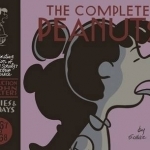
The Complete Peanuts 1967-1968: Volume 9
Charles M. Schulz and John Waters
Book
As we rush toward the end of Peanuts' second full decade, Snoopy finds himself almost completely...
Gareth von Kallenbach (980 KP) rated Avatar (2009) in Movies
Aug 8, 2019
The film is set in 2154 and involves a disabled vet named Jake (Sam Worthington), who is sent to the distant moon of Pandora following the death of his brother.
It is learned that Pandora possesses a highly valuable resource that sells on the resource ravaged earth for $200 million a kilo and, which naturally sets off a frenzy of mining on the moon.
With the cultivation of the resource at a premium a facility has been established to ensure a constant mining operation and protect those on the base from the hostile wildlife that is everywhere.
While the wildlife on Pandora is a big issue, it pales in comparison to the issues poised by the native Na’vi who are a blue-skinned race who live in the forests of the moon and are in harmony with the nature of the planet which have caused them to hamper the mining efforts of the humans.
Anxious to keep the mining operations going, and limit the use of brute force to avoid any p.r. issues, a program known as “Avatar” is put into motion which allows select individuals to pilot a surrogate made from Na’vi and human D.N.A. in an effort to get the Na’vi to move and end their opposition to the mining.
It is hoped that the pilots will in time find a way to force the cooperation of the Na’vi after spending time amongst them.
Jake is thrilled with the program as once his remote link is established, he is free to run and jump again and in time finds himself absorbed by the Na’vi who wish to show him their ways as a test of his worthiness after he is separated from his fellow humans.
At this point Jake leads a double life as his surrogate learns what it is to be Na’vi and when the surrogate is asleep, Jake unhooks himself from his control bed, and is back on the base with his fellow humans. Jake is approached by Colonel Quaritch (Stephen Lang), who tasks the Marine to obtain tactical data on the Na’vi should his forces be called into action to force their cooperation. Jake is promised a costly procedure in return which would allow him to regain the use of his legs and live a life outside of his wheelchair.
As time passes, Jake grows closer to his Na’vi mentor Neytire (Zoe Saldana), who aside from being the daughter of the chief is a skilled hunter for her people. At this point Jake begins to question the motives and methods of his people and sees the exploitation and possible massacre of the Na’vi as something he can no longer accept. Jake puts a plan in motion to protect his human and Na’vi friends and what follows is an epic confrontation that is awash in visual splendor and action as James Cameron once again pushes the boundaries of technology.
Some may cite the story as resembling “Dances with Wolves’; and other films that deal with the exploitation of the native races, but the true magic of the film is that it is not limited to the lavish visuals but is instead powered by the compelling characters.
The 3d fx shine as Cameron has created another world with a thriving ecosystem that is as much a character in the film as the flesh and blood and digital creations that power the story.
The film has good supporting work from Sigourney Weaver, and Michelle Rodriquez as well as the fine ensemble cast. The amazing blend of story, digital splendor, and characters all combine to make “Avatar” a truly amazing visual film with a strong message of love, hope, and unity. James Cameron has once again proved that he is one of the true masters of cinema and has crafted a magical experience that enchants and informs.
Natacha (374 KP) rated The Rose and the Thorn (The Riyria Chronicles, #2) in Books
Oct 19, 2019
[Warning this review contain spoilers]
Things I liked:
-It was so nice to be back with the boys, their dynamic and their friendship. I can't get enough of it.
-The book was a little more focused on Royce this time instead of Hadrian. I tend to have a little soft spot for the "broken" man trope, hence I love Royce (I need to point out that I don't like the "broken" man trope that uses his past as an excuse to be a d*ck and borderline abusive to his love interest). And do you know what I like even more than the "broken" man trope? The "broken" man that put his guard down for the woman he loves. I like that Royce was sweet and nice to Gwen and to her only, and then take his knives out and cut anyone that dares to hurt her. I loved seeing him trying to hide his feeling and yet being so obvious. My heart melted.
-Reuben was also a sweetheart. I like his character overall and his arc. The mystery around his mother kept me guessing
-I was pleasantly surprised to see the relationship between Reuben and the Price being genuine. When this subplot started I would have bet that the Price will end up being a jerk to Reuben and use him for his own purposes but it didn't go that way.
-The plot was interesting and fast pace. There were twists I guessed from the get-go and others I didn't see it coming. Also from what I gathered from other reviews and discussions in this book, we have a lot of characters that are also present in the original series The Riyria Revelations and I think readers who have read the first series will appreciate that.
Things I didn't like:
Unfortunately, there were two major points that kind of ruined my enjoyment a little.
-I picked this book because I wanted more Hadrian and Royce adventures. But this story felt very, very much Reuben's once instead. We spent so many pages following him that I was counting the chapters until we go back to my two beloved characters. I felt like their story was just a subplot.
-Because the story of Hadrian and Royce felt like a subplot I was expecting at the end the two stories to connect in an epic way that will redeem the fact that I spent so little time with them. But it didn't. In the end, although the stories where connected (Hadrian and Royce looking for Rose and Reuben I knew were Rose was) it didn't matter. No matter what Hadrian and Royce did it barely affected the story main story. [SPOILER] They didn't save Rose and they didn't kill the guy that killed her. The only thing they did is scared another character and force him to protect Gwen and her business. What? That's it? If you take them out of the book it will make no difference and won't really affect Reuben's story. I don't know, maybe I missed something but I was left disappointed.
Goddess in the Stacks (553 KP) rated The Book of M in Books
Sep 7, 2018
We enter on Max and Ory in an abandoned hotel, running out of food and supplies. Max has lost her shadow, which means she will soon start forgetting. Everything. (There are rumors that Shadowless have died because they forgot to breathe or eat.) We learn it's been a few years since the phenomenon started happening, and flashbacks tell us the story of those early months. Like any good dystopia, it is a world-altering process. Governments are gone because no one remembered to run them. Food and other supplies are dwindling because farmers, shippers, manufacturers forgot what they were doing and how to do it.
But with the forgetting comes - magic, of a sort. Ory comes across a deer in the forest that instead of antlers, has wings sprouting from its forehead. Because someone forgot that deer shouldn't have wings - and so it happened. Forgetting that something can be destroyed can make it indestructible. Forgetting that you left a place can take you back to that place. Forgetting a place exists can make that place no longer exist. It's not a very controllable kind of magic. And it's dangerous - you can never be quite sure what you'll forget, and you can affect other people with it.
And the forgetting starts with losing your shadow. Ory gives Max a tape recorder, so she can record things she might forget. He posts signs around their hideout to remind her of things, like "Let no one in. Ory has a key." and "Don't touch the guns or the knives." But Max knows she is a danger to Ory, and so while she can still remember enough to function, she runs away.
The book mostly concerns Ory and Max's journeys across the country; Max trying to find something she's forgotten, and Ory trying to find Max. The adventure is gripping, heartbreaking, and at times confusing. (Mostly on Max's end, as magic warps things around her.) There are a few side characters who also have viewpoint chapters. Naz Ahmadi is an Iranian girl training for the Olympics in the US - in archery, which comes in quite handy. We also have The One Who Gathers, a mysterious man in New Orleans who has gathered a flock of shadowless.
If you ever played the roleplaying game Mage: the Ascension, and remember the concept of Paradox, this book reminds me of that a lot. (Is it a surprise that I'm a tabletop RPG geek? It shouldn't be. I own almost all of the old World of Darkness books, and currently play in a D&D game, and hopefully soon a second D&D game!) Anyway. Paradox. Where doing magic too far outside the bounds of acceptable reality punishes you, so you have to weigh the potential consequences against the magic you want to do.
I really enjoyed this debut novel; it is a very original take on a dystopia, and raised a lot of questions about personality, memories, and what makes a person the person you remember.
You can find all my reviews at http://goddessinthestacks.com
Billie Wichkan (118 KP) rated Turning Secrets (Stonechild and Rouleau Mystery, #6) in Books
Mar 15, 2019
Former teenage runaway and new single mother Nadia Armstrong moves to Kingston to turn her life around. But six months after she rents a low-end apartment, her body is found on a concrete slab at an isolated construction site. Major Crimes begins piecing together her last days, uncertain if this is a case of suicide or murder. To make matters more difficult, a member of the team is leaking information to reporter Marci Stokes, putting Staff Sergeant Rouleau in a precarious position.
Meanwhile, Officer Kala Stonechilds niece, Dawn, is secretly corresponding with her father, whos out on early parole. Dawn isnt sure what he wants, especially when he turns up in town uninvited. Dawns friend Vanessa is also keeping a dangerous secret her relationship with an older man named Leo, who preys on young girls. And its not long before he has Dawn in his sights.
*Disclosure - I received a free copy for purposes of an honest review; Thank you NetGalley and Dundurn for the eARC.*
I have not read any other books in this series and this has not hindered me in any way with how I was able to pick up with the already established characters. The author did a great job of giving me just enough to give the story depth with back story tidbits.
This book has plenty of twists and turns to it to keep you engrossed from the start. I like the story-line of this book and it had relevant topics; sadly things that are happening daily in our world.
I dont want to give too much away to the story-line but will say completely hooked me and a very surprise ending but also sad.
Will be reading the previous ones as really enjoyed this.

Big Hook Crochet: 35 Projects to Crochet Using a Large Hook - Hats, Scarves, Jewellery, Baskets, Rugs, Cushions and More
Book
Discover the world of giant crochet with 35 fast and fabulous projects. A keen crocheter, Emma...

BoyAhoy - Gay Chat, Meet, Friend
Social Networking and Lifestyle
App
BoyAhoy is the global network for meeting gay men. Instantly meet like-minded men near you or...

Skout - Chat, Meet New People
Social Networking and Lifestyle
App
Skout is the global network for meeting new people. Instantly meet people near you or around the...
Merissa (13585 KP) rated Thanatos (Guardians of Hades #8) in Books
Jun 16, 2021 (Updated Jul 18, 2023)
Calindria has been thought dead for six centuries, and the woman she is now is very different from the girl she once was. She has a power over nature, and a power over death, both of them out of control. She needs time and peace to learn to control them, not so easy when you're in a very dodgy realm trying to escape with your life. Luckily for her, Thanatos is on hand to help, although he also comes with his own issues.
This was a brilliant book. I was hooked from the very first page. Calindria is a great character, being both soft and hard when necessary. My heart broke for Thanatos' history, and I'm glad they were both able to work through it. The pacing is perfect - not too fast or slow. Instead, you are whisked away on an adventure with some steamy moments.
The world-building in this story also deserves a mention. It was so descriptively written, it felt real when they were talking about having certain powers dampened or completely gone.
A fantastic end to this series while still leaving me wanting more. I do think it should be titled Calindria though, not Thanatos! LOL Absolutely brilliant, and highly recommended by me.
** same worded review will appear elsewhere **
* A copy of this book was provided to me with no requirements for a review. I voluntarily read this book, and the comments here are my honest opinion. *
Merissa
Archaeolibrarian - I Dig Good Books!
Jun 16, 2021
Merissa (13585 KP) rated Daughter of Chaos (Red Magic #1) in Books
Jun 8, 2023
I loved how Jen McConnel set this all up and how it was all executed. The writing and links are flawless, with plenty of surprises along the way. I thought having Aphrodite as a patron of Red magic was brilliant, and anyone who thinks that love isn't chaotic is seriously mistaken!
With lessons to be learnt, Darlena has some serious choices to make. Some of which she makes on the rebound, some of which she has time to think about. With friends and allies helping her along the way, as well as enemies trying to hinder her, her life is moving along at breakneck speed. Will she find the time to figure out what to do?
With a cast of amazing characters, from the noble yet slightly self-righteous Justin to the flawed and grasping Rochelle, you have a fast-paced story that will keep you engrossed from beginning to end. I can't wait to read more about Darlena's story to see what happens next. Definitely recommended.
* Verified Purchase on Amazon *
Merissa
Archaeolibrarian - I Dig Good Books!
May 19, 2016
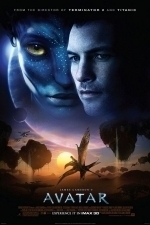
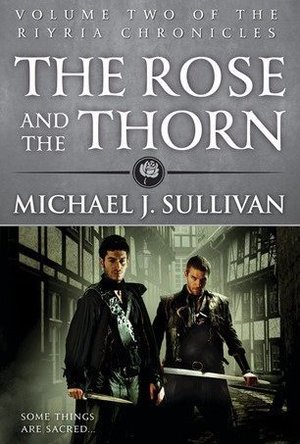
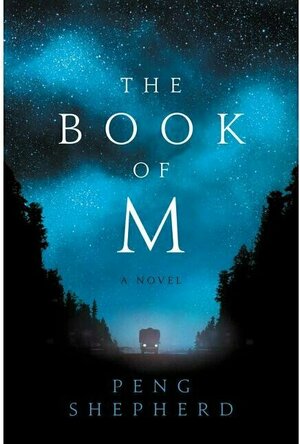

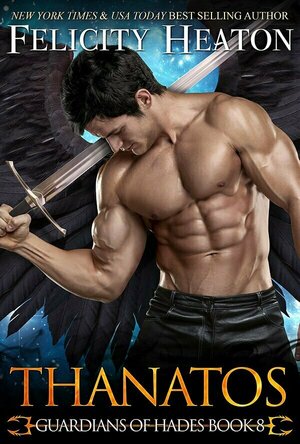
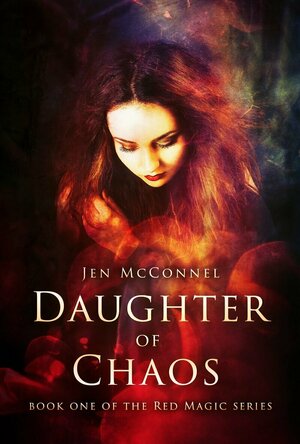
Vicki Gleave D'Aunay (12 KP) Aug 8, 2019